Planning a trip to Oman, but wondering where to start? In this Oman Travel Guide, we’ve put together answers to all the questions we had while planning our trip, along with a few of our top tips to help you get the most out of your Oman tour.
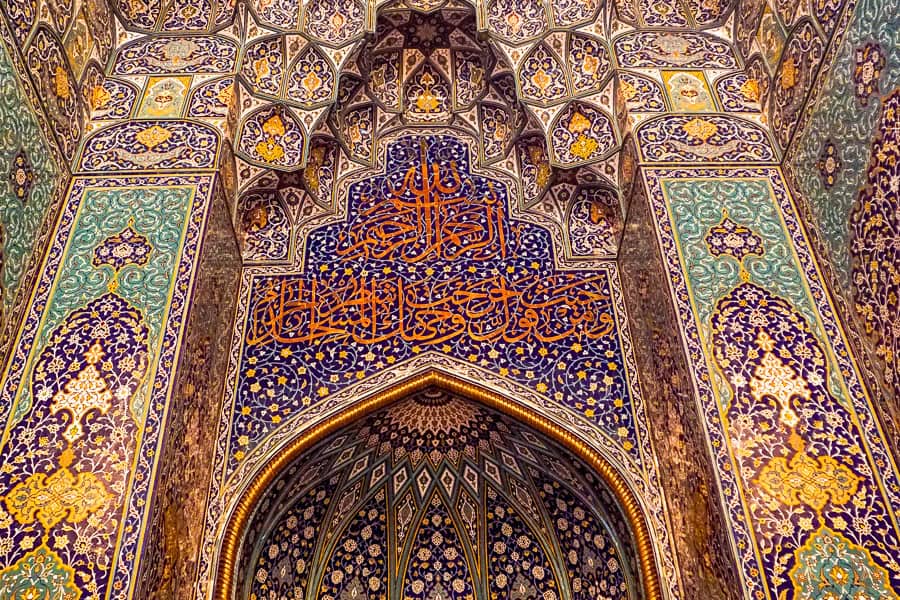
From seemingly endless windswept sand dunes to jagged mountain ranges that cut into the orange sky at twilight, Oman is a country of surprise and contrast.
Ancient watchtowers stand guard over modern, bustling towns. Dramatic, sheer-walled canyons give way to lush, emerald wadis, and parched limestone plateaus reveal deep blue sinkholes teeming with tiny, toe-nibbling fish.
Stunningly ornate mosques and impeccably restored medieval forts will leave you open-mouthed with wonder; 4WD routes through the country’s highest mountain ranges will send your heart racing, while SCUBA diving or snorkelling with vast schools of fish on the country’s pristine reefs will have you signing up for more.
Slowly but surely, Oman is building its profile on the tourist map, and with infrastructure and services on a trajectory of constant improvement, there’s never been a better time to plan a trip to Oman.
Our Oman Travel Guide aims to answer some of the frequent questions people have about visiting this unique Middle Eastern destination, and share some of our own insights into what it’s like to travel in this extraordinary country.
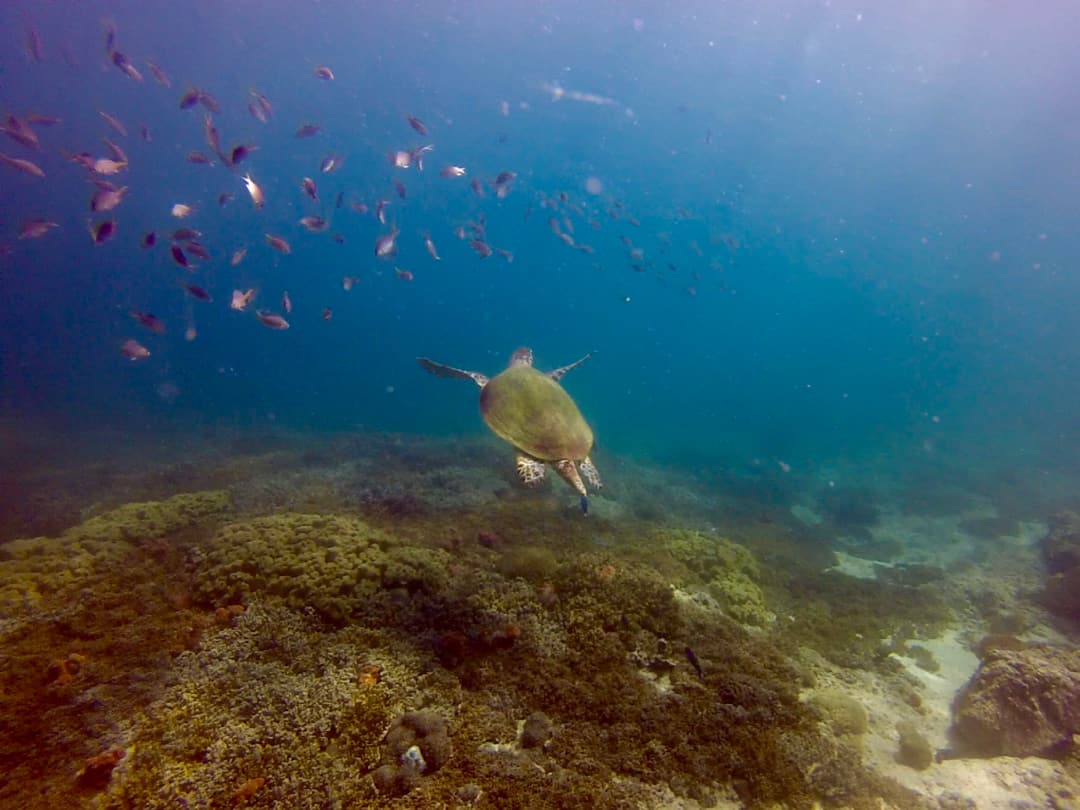
What’s in this post?
Planning a Trip to Oman
– Best Time to Visit Oman
– Getting to Oman
– Oman Tourist Visas
– Managing Money in Oman
– Driving in Oman
– Hiring a Car for an Oman Road Trip
– Public Transport in Oman
– Getting Online in Oman
– Oman Accommodation Options
– Omani Cuisine
– What to Wear in Oman
– Safety in Oman
– Top Tips for Planning a Trip to Oman
This post contains affiliate links. If you choose to buy through these links we may earn a small commission at no extra cost to you, which helps us to keep Two for the World running. Many thanks for your support!
Best Time to Visit Oman
We visited Oman in October, traditionally a period when temps are starting to cool off ahead of winter. We had highs of 30-40° Celsius every day. The afternoons felt even hotter.
The thing is, apart from the mountains and winter nights in the desert, Oman doesn’t really get cold: even in winter, daily averages are a pleasant 20-21°C in the capital, Muscat.
One thing’s for sure, unless you love skin-searing, scorching heat, we’d recommend planning your Oman tour outside the summer months of June to August, when it’s not unknown for temperatures to soar towards 50°C.
The heat tends to be more bearable between October and April, with short rain showers occurring between January and February. The monsoon season – called the khareef – fogs the south coast of Oman between June and September, creating a lush, green, humid environment.
Whatever time of year you decide to visit, aim to be out of the heat between 12pm and 3pm: it’s the hottest time of the day, and the light is so bright and hazy that it makes photography particularly challenging. We used this time for siesta, visiting museums or travelling from one town to another (in all cases aircon is key).
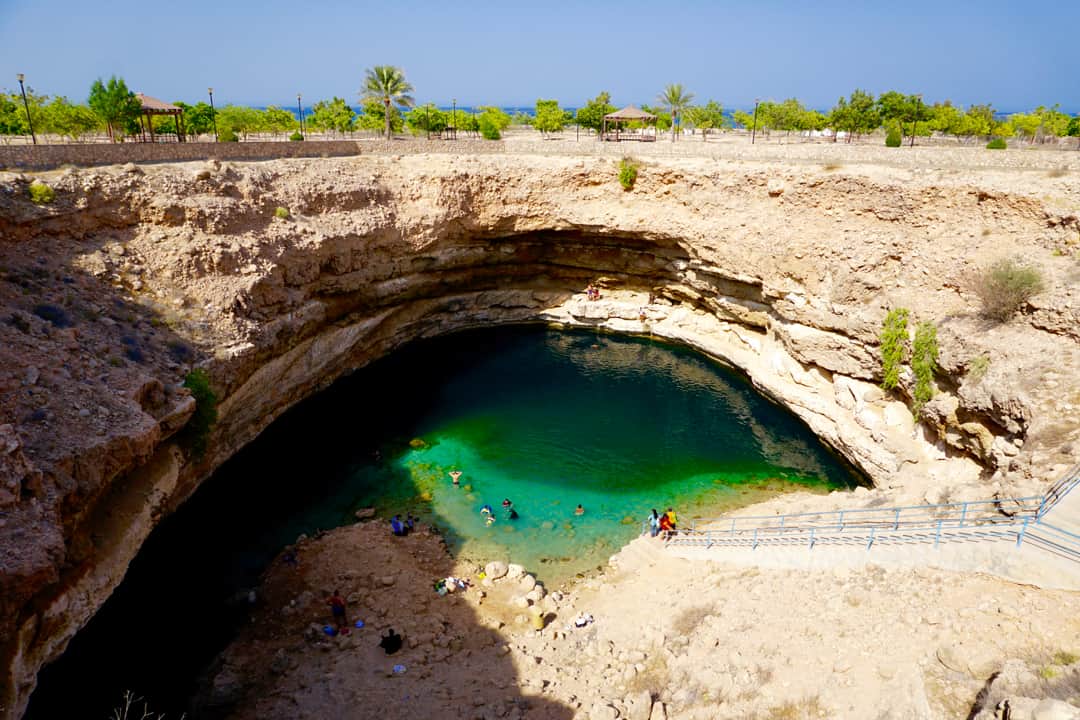
Getting to Oman
Most international travellers arrive by air. Muscat International Airport (MCT) is the country’s main gateway, with direct flights from Europe, Asia, Africa, and the Middle East.
It’s also a fairly straightforward journey to get to Muscat overland from Dubai in neighbouring UAE, but this will take the better part of a day.
For travel within Oman you’ll find Oman Air and SalamAir operating domestic flights between Muscat and both Salalah and Khasab.
Oman Tourist Visas
Tourists from many countries can now visit Oman without a visa for upto 14 days. The Omani Foreign Ministry website has a list of countries that qualify for visa-free travel, along with information about the conditions that apply – namely 6 month passport validity, the need for a return travel ticket, confirmed hotel bookings, and health insurance.
Tourists wanting to stay for more than 14 days, or those that don’t qualify for visa-free entry can now apply for a visa online via the Royal Oman Police website. There are a range of visa types for visitors to Oman, but most tourists would need a Tourist Visit Visa (Unsponsored), for which there are a number of sub-types and visit durations to choose from.
Before travelling it’s always a good idea to check your own government’s website for current visa information for Oman.
Managing Money in Oman
Currency
The Omani rial is pegged to the US dollar at a rate of 1 Omani rial to USD$2.60, so while prices might seem relatively cheap on the ground, the exchange rate can be tough: that 4-minute, 3 rial taxi ride will actually cost you close to 8 bucks US.
In addition to rials, which come in 1/2 rial, 1 rial, 5, 10, 20 and 50 rial notes, you’ll also be working with baiza, the small money: 1,000 baiza is equal to 1 rial.
It’s worth changing up 50 rial notes as soon as you can in hotels and at restaurants, as they can be harder to change anywhere else. It’s also useful to keep small money handy for taxis and small purchases.
ATMs and Credit Cards
We found ATMs everywhere in Oman and never had any trouble getting cash out. We also found credit cards to be widely accepted in hotels, restaurants and petrol stations.
Driving in Oman
The great news for those that choose to self-drive is that Oman has some of the best roads we’ve come across.
Modern, well-marked, clearly signposted two- and three-lane highways connect many of the major centres across Oman. On these major roads the speed limit is usually 120-kilometres per hour, a limit that’s strictly enforced by speed cameras every couple of kilometres. Minor roads were also in extremely good condition and tended to have a speed limit of 80 or 100-kilometres per hour.
The only exceptions to this were some of the more obscure roads like the dirt track to the Bat Tombs, or the unpaved roads around Jebel Shams and the Western Hajar Mountains. These were sometimes challenging roads to drive, more suited to 4WD vehicles.
Generally speaking, driving in Oman was a breeze, just get into the habit of checking every road sign to ensure you stay within the speed limits, and keep an eye out for unexpected speed humps. Local drivers can be speedy and aggressive, but no moreso than we’ve encountered at home.
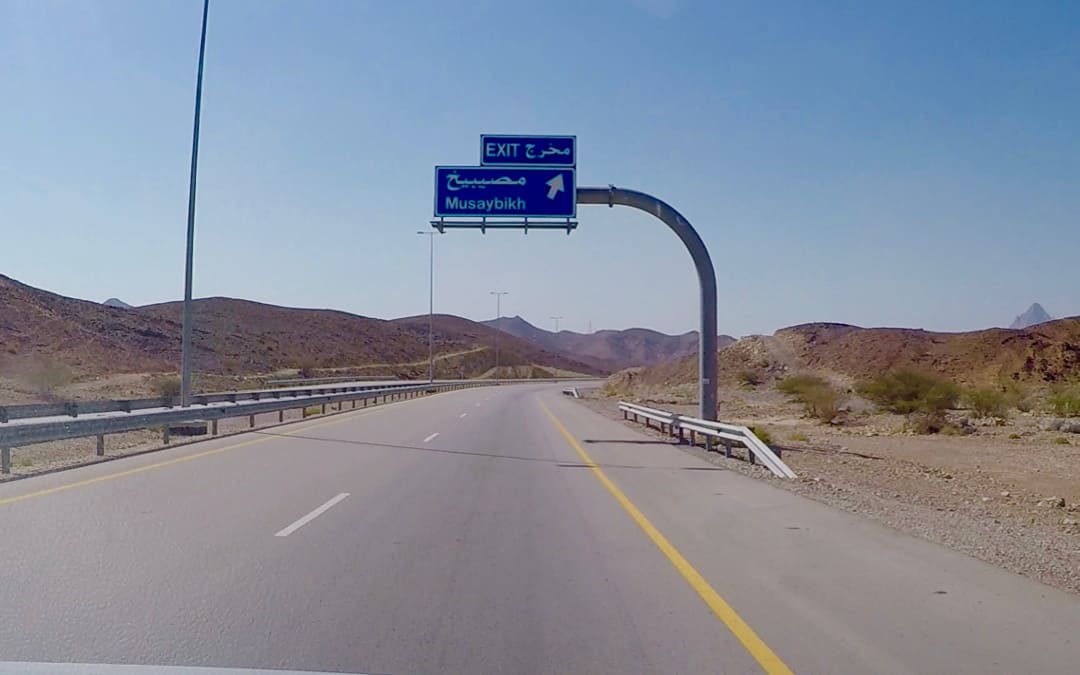
Navigation
Roads in Oman are generally well signposted, but that doesn’t mean you won’t occasionally miss a turn or get a little lost. This sometimes means a long trip to the next available exit to turn around and retrace your steps. Stick with it.
In terms of navigation though, the question we most often get asked is “does Google Maps work in Oman?” Sadly, at the time of writing, the answer is no. Google Maps’ step-by-step navigation does not work in Oman. You can plot a course from A to B and get a detailed route preview, but the navigation itself is not active.
In practice, this means you need to manually track your position on the map to ensure you follow the correct route. Don’t panic if you find yourself on a nice new road that doesn’t appear on your map. Even Google Maps sometimes struggles to keep pace with the changes under Oman’s intensive roadworks program.
As an alternative, the Waze app is considered by many to be the best navigation app for Oman, and does provide step-by-step navigation. However, we had fairly mixed results using this app, and were disappointed that it doesn’t provide an offline map capability.
In the end, we persisted with Google Maps and set aside additional travel time each day to account for occasionally getting off-track.
Hiring a Car for an Oman Road Trip
By far the easiest way to get around Oman is by private vehicle. Hiring a car or 4WD gives you the ultimate flexibility to pick and choose which Oman highlights to visit, as well as offering the opportunity to get beyond the major sites and enjoy the country’s truly epic scenery.
We’ve always found the best deals at DiscoverCars and they’re our go-to car hire provider these days, with great rates and free cancellation should your plans need to change.
Organising a rental car in Oman well ahead of your visit will get you the best rates and widest choice of vehicle.
Collecting and dropping off your hire car
Car hire counters are conveniently located in the arrivals area of Muscat International Airport. Plan for a little extra time to pick up the vehicle as the process can be slow.
Arriving back at the airport can be frenetic and confusing. Be warned, if you miss the turning into the car rental drop-off (the upper floor of the short-term carpark) the first time, and there’s a good chance you will, you’ll need to do a huge loop out of and back into the airport, and try your luck a second time.
Once you park the car, you head back to the same counter in arrivals, where you’ll need to wait while they process paperwork and send someone to inspect the vehicle. As with picking up, allow additional time for the drop-off process.
Sedan or 4WD?
Perhaps the most difficult decision we had for our Oman road trip was choosing between a sedan or 4WD vehicle. Oman is a fairly expensive country and we wanted to save money where we could, so a sedan seemed like an obvious choice.
After hours of research, reading conflicting advice on blogs and forums and watching YouTube videos, we were still uncertain whether we could get to the places we wanted to visit with a sedan. In the end, to be on the safe side, we opted for a 4WD.
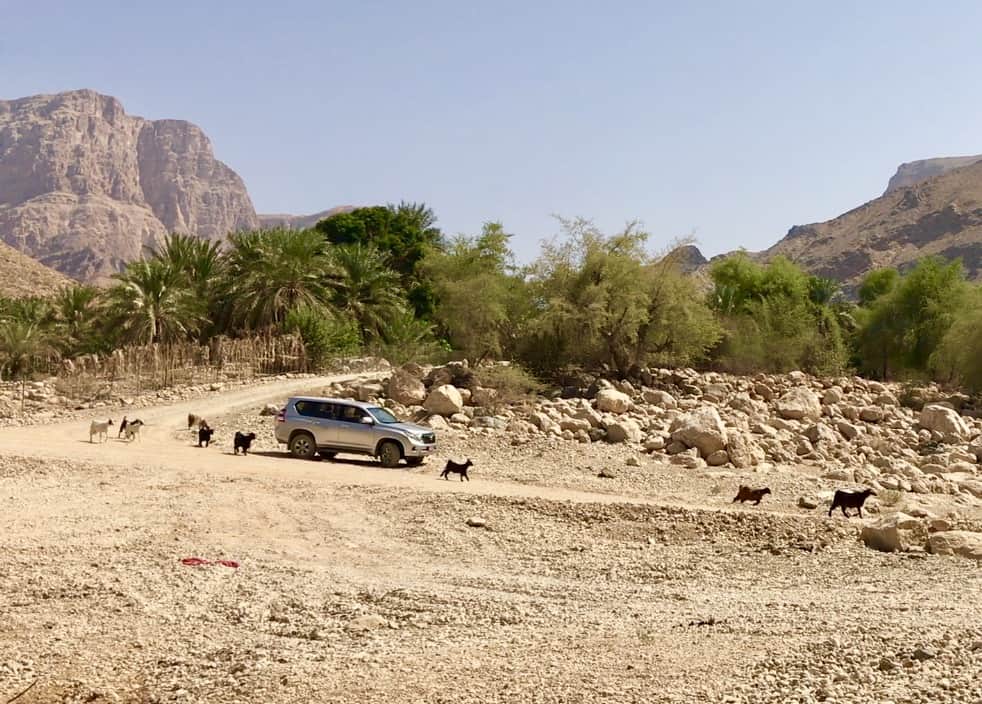
Ultimately, the decision comes down to where you want to go, and how far you want to push your luck with car hire companies.
For example, it is possible to visit the desert camps at Sharqiya Sands without a 4WD: camps usually offer a pick up service from one of the nearby towns, so you can leave your sedan overnight at their offices and travel with them in their 4WD. If you want to travel to the camps yourself, or go dune driving, you’ll need a 4WD.
We wanted to see the beehive tombs at Bat, around 120-kilometres from Nizwa, and we’d read accounts of people making the trip in a sedan. While the 20-kilometres of unpaved road to reach the site is in reasonable condition, it’s still a long, rubbly dirt track that puts you at risk of voiding your insurance should your car hire company take exception to you off-roading in a sedan.
The mountain road to Jebel Shams is another example where many travellers have said a sedan is perfectly feasible, and to some degree this is true: the road from Al Hamra is paved most of the way, but there is still a long stretch of unpaved road to get up to the mountain resorts.
The road was in fairly good condition when we visited and we didn’t need to engage the 4WD on our car, but it does get pretty steep and bumpy in places. Driving a sedan here would be risky, not only on terms of safety, but also in terms of voiding your insurance.
While getting up Jebel Shams might be achieved in a sedan, getting over the Western Hajar Mountains via the mesmerising (if hair-raising) 70-kilometre drive to Hatt, Wadi Bani Awf and Snake Gorge should be made by 4WD only.
The pass is rugged, bumpy, sandy, narrow and heart-in-mouth steep in places. In addition to a decent, reliable 4WD, you also need a calm temperament and a healthy dose of nerves to complete the journey. If there’s even a hint of rain, don’t make the trip. Otherwise, don’t miss it: this spectacular drive was one of the highlights of our Oman tour.
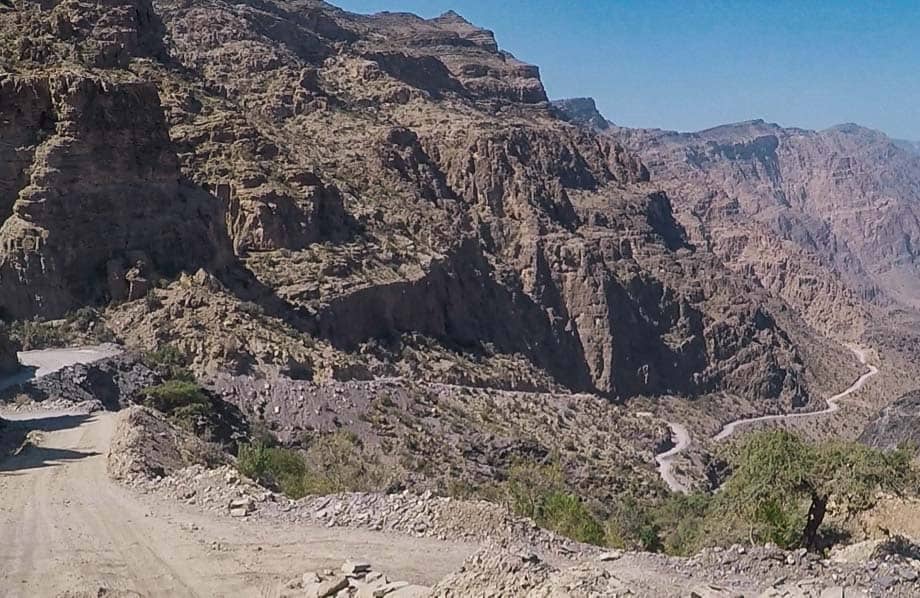
With the sheer level of road-building going on right across Oman at the moment, dirt tracks are being paved and new routes created all the time, so be sure to check local sources for the latest road information.
Public Transport in Oman
Public transport within Oman is quite limited, with no train or metro network, and a fairly limited bus system.
The bus company Mwasalat operates some bus services within Muscat, and to major intercity destinations within Oman. There are also a number of privately operated minibus services that can be hailed on the street, as well as private and shared taxis.
In the north of the country, most major sites are within a couple of hours’ drive of Muscat. If you decide not to hire your own vehicle, day trips with drivers can be arranged in most hotels and you’ll find just about every taxi driver will offer private trips and tours across Oman.
Getting Online In Oman
Hotel internet
The good news is that wifi was available in all the hotels we stayed at, with the exception – unsurprisingly – of the desert camp in Sharqiya Sands. The bad news is that the wifi connection was consistently poor.
We were able to upload a few photos to our Instagram page, and occasionally post on Facebook, but even some of these tasks were time consuming in terms of photo upload times.
Overall, you’ll need to be patient with Omani wifi and have realistic expectations. You’ll certainly be able to get the basics done, but streaming your favourite television shows or music might just have to wait until you get home.
International eSIM
If you’d prefer to have your internet access sorted before you arrive you might want to consider getting online in Oman using an international eSIM like Airalo.
Having access to mobile data is certainly helpful for navigating your way around Oman’s cities and towns, along with staying connected with the news and being able to book hotels and tours on the go if you need to.
Local SIM cards
Keep an eye out for the Friendi mobile stand as you enter the arrivals hall at Muscat International Airport. There are a range of affordable SIM plans available and the friendly shop assistant happily set the whole thing up and activated the SIM while we waited.
We pretty much got a 4G signal with Friendi everywhere we went, with the exception of the desert, and Jebel Shams, where 3G access dropped in and out depending on where in the mountains we were.

Oman Accommodation Options
Hotels
When we travel, we aim to stay in comfortable, private budget to mid-range rooms with an ensuite bathroom. This was a bit of a challenge in Oman, where even budget rooms tend to be relatively expensive.
Our accommodation costs varied significantly, from around US$50 per night for our cheapest room to more than US$150 for the most expensive.
To be fair, our pricier accommodation options were either part of broader experiences, such as a nomadic desert camp in the dunes of Sharqiya Sands, or in places where accommodation options were limited, like Jebel Shams.
Without exception, all of the places we stayed offered high-quality accommodation with aircon and a decent ensuite bathroom with western style toilet (with the exception of the desert camp, which had clean, well-laid out squat toilet blocks).
Also, for the most part, accommodation can be easily booked through most of the mainstream internet booking engines.
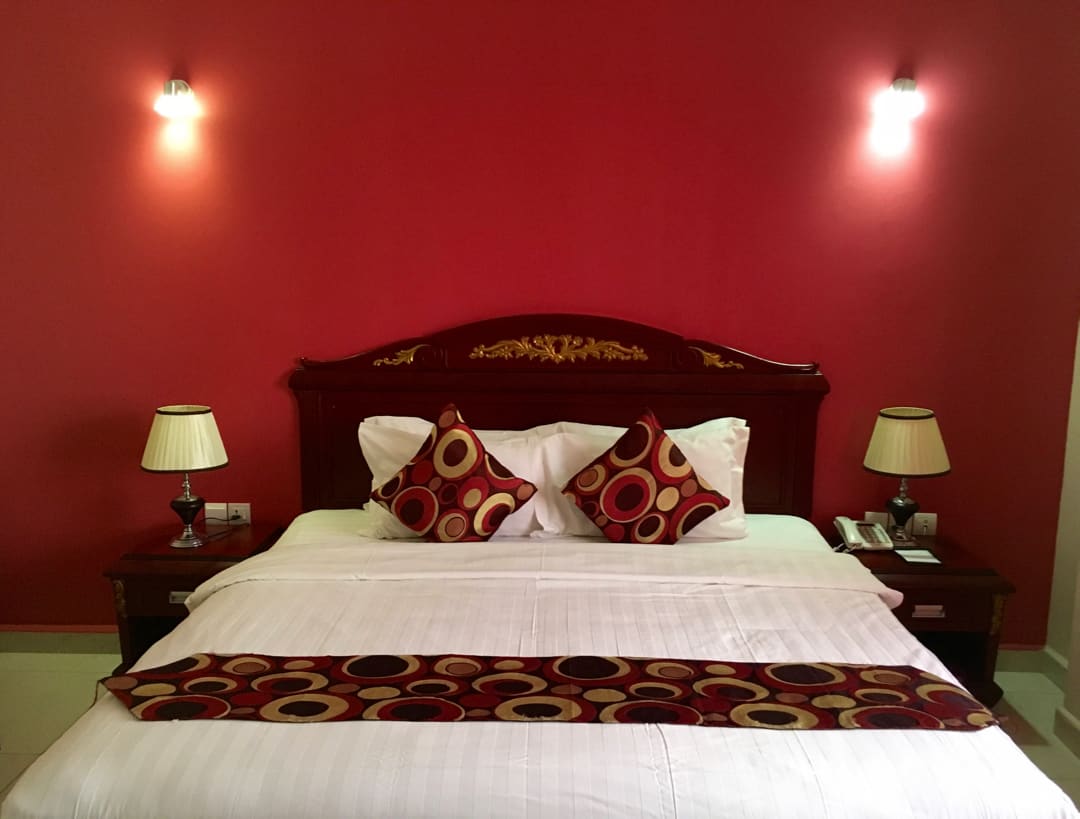
Booking.com is our go-to website for finding accommodation when we travel, and we used it to find and book all of our accommodation in Oman.
Check out what’s available and book your Oman stays in advance to avoid missing out on the best deals.
Camping
Wild camping is allowed almost everywhere in Oman, and is a safe and excellent way to keep costs down while experiencing the natural beauty of the country.
We encountered campers throughout our road trip: by the beach, in the mountains, and on the dunes.
At Jebel Shams, we got up early to catch dawn across Wadi Ghul and found a couple camping near the canyon edge watching a perfect sunrise from their tent. Later that same day, we met another couple hiking the famous Wadi Ghul Balcony Trail with their camping gear. We can only imagine the views they must have awoken to the next day.
For many people, wild camping is a highlight of a visit to Oman and it’s certainly something we’ll consider for our next visit.
Omani Cuisine
If you love shwarma as much as we do, Oman just might be your nirvana, with inexpensive shwarma joints all over the country.
They’re great if you’re on a budget (costing a third of the average meal in a tourist restaurant), and they were consistently tasty everywhere we went. Just about all shwarma plates come with salad, hummus and bread alongside the plate of spit roasted meat.
Shwarma, however, is not Omani. The reality is, it’s not that easy to find genuine Omani cuisine. This is changing though, particularly in Muscat, where Omani restaurants are gaining a foothold.
They’re worth searching out: you’ll be greeted with the smells of cardamom, turmeric, mint, clove and citrus as you tuck into delicious stews, curries and grills, washed down with any combination of deliciously fresh juice. At the end of the meal, you’ll be served cardamom-infused Omani coffee, alongside sweet, sticky local dates.
There are plenty of good sources on Omani cuisine. One of our favourites is Mark Wiens at Migrationology; his vlog on Omani food really captures the essence of this tasty Middle Eastern cuisine.

What to Wear in Oman
Oman is a progressive and modern Middle Eastern country; it’s also a predominantly Islamic, conservative society. As with all travels, practising cultural sensitivity and respect is important.
When visiting a new country, we take our cues from the local people and dress accordingly.
In Oman, many local men wear the dishdasha (a traditional, long shirt-dress), while others wear long trousers with a collared shirt or t-shirt. While we did see a few local guys wearing shorts, these were few and far between, and only at beach resorts or while out hiking or running.
For women, the dress code is conservative: just about all local women we saw were wearing loose, airy abayas (cloaks) and hijab (head covering); some were wearing a niqab (full covering except the eyes). While this is not expected of tourists, covering shoulders and legs at a minimum will be appreciated by the locals.
Generally speaking, Danielle wore long pants, a loose, long-sleeved top and sandals. She always carried a scarf in case a head covering was required (such as visiting a mosque). When swimming in wadi pools or at the beach, she wore shorts and a loose t-shirt over her swimsuit.
This is not to say we didn’t see many tourists wearing shorts, tank tops, skin tight pants, and even tiny bikinis. There’s nothing to stop people dressing as they see fit, but in our opinion, to be culturally respectful and draw less attention to yourself, more modest attire – for guys and girls – goes a long way.
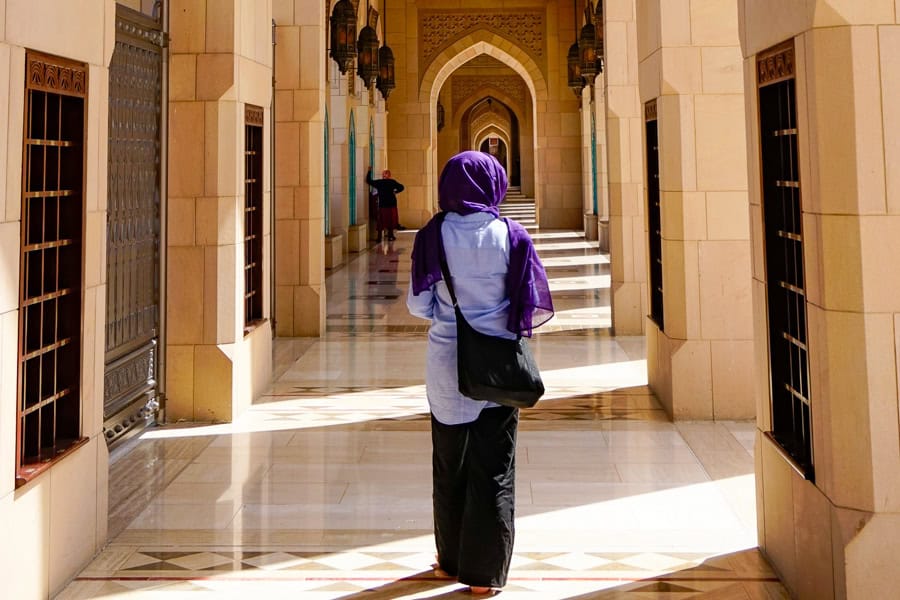
Safety in Oman
Is Oman safe for tourists? This is the most common question we get asked by other travellers interested in visiting the Sultanate, and we can say categorically that from our experience, Oman felt like a very safe country.
We wandered around on foot in a host of cities and towns like Muscat, Sur and Nizwa, both during daylight hours and at night. Apart from curious stares, and typical banter in the souqs, we received no hassle at all.
In the bigger towns, we found Omanis to be polite, if a little aloof, while in the smaller towns, and driving around, people were friendly and keen to offer assistance.
The crime rate is relatively low in Oman, but as with anywhere, lock your belongings away and be aware when travelling on your own or in isolated areas.
Top Tips for Planning a Trip to Oman
Plan around weekends
As an Islamic country, weekends in Oman fall on Friday and Saturday. On these days you may find many museums, attractions and some shops and restaurants closed. You’ll also find other attractions, like some of the more popular wadis, desert camps and mountain retreats, full with weekending families.
To avoid the crowds and the risk of not securing a booking where it’s required, try to visit key attractions during the week rather than at weekends. If that’s not possible, visit first thing in the day; you’ll miss the worst of the heat then too.
Work around the heat
If you’re out and about in the middle of the day, you may literally feel like you’re melting. Oman takes the concept of ‘hot’ to a whole new level.
If your Oman itinerary allows, try to plan your activities so that you’re inside, and out of the heat, between the hours of 12pm and 3pm. Hit up a museum, enjoy some Omani coffee and dates in a café, snooze back at your hotel or drive to your next destination…set aside the afternoons for chilling in aircon.
From 4pm on, the temps start to wane, the light is perfect for photos, and Omanis come out to socialise.
Make time for roadworks
While the roads in Oman are excellent, work is afoot to make them even better. You’ll find roads under construction almost everywhere you go, meaning roadworks and speed restrictions in some areas, and the occasional diversion in others.
We recommend building in extra travel time to your itinerary to account for roadworks.
Do you have other questions, or insights to share about your own trip to Oman? Let us know below. If you’re looking for more Oman inspiration, check out our other posts on this magical destination.
If you’re looking for inspiration for great road tripping itineraries and adventures, check out our Road Trips page, and our bucket list of 100 ultimate road trips around the world.

Thanks for your sharing…..really useful. How much is the 4X4 rental?
Hey there Bee, really glad you found this post useful.
Costs for car rental can vary greatly depending on the time of year you travel, duration of the trip, class of vehicle, and how far in advance you are booking.
As a rough guide I would budget to pay anywhere between US$50 and $100 per day for the vehicle.
We always check both the rentalcars and discovercars websites to see where we can get the best deal (see links in our 2-week self drive Oman itinerary post).
Hope this helps.
John
Hi Danielle and John. Thanks for a very informative, thoughtful, fun description of your trip. I’ll be heading to Oman for 10 days in March and this helped a lot. I realize I should have given myself more time in the country so I am keeping my focus down to Muscat…Sur…Nizwa areas. I’m traveling alone and wonder if it would be better to hire a driver. Do you have any idea about the cost of doing that? Best. Audrey
Hi Audrey,
Thanks for the message, really glad you found the post useful. Unfortunately we really didn’t consider hiring a driver ourselves so haven’t done any research on that subject at all so wouldn’t really be in a position to offer any useful advice in this respect.
Hope you have an incredible trip whatever you decide.
Regards
John and Dan
Is it possible to visit the popular tourist spots in Muscat, Salalah & Musandam in a single tour. How many days you recommend are required to see the main attractions in these areas ? Thanks.
Hi there Biju
You could certainly visit Muscat, Salalah and Musandam on the same trip although that may depend on how much time you have and how many other sights you want to see in Oman. I
As Salalah and Musandam are quite far from Muscat the quickest option would be to fly. You can also get to Musandam by ferry, although at the time of writing ferries do not operate every day.
Unfortunately we haven’t been to either Salalah or Musandam, although both are on our bucket list. From what we have read, you would need a few days in each to make the most of your visit, so if you were adding this to the trip we did you would perhaps need about three weeks all up.
Would love to hear how you go if you do manage to visit.
Loved the posts! We are going to Oman in March and will do a self drive. I’m having trouble finding a 4WD rental car. Who did you rent from? Was 4WD specified at the outset? Thanks, Jan
Hi Jan, really glad the post was helpful. We’re excited to hear you are heading to Oman in March and hope you enjoy it as much as we did. We booked our hire car through rentalcars.com and deliberately picked a 4WD from the available options. The car was from Dollar Rental Cars, and we opted for the additional insurance available through rentalcars.com. Hope this helps, and please feel free to reach out if we can be of any further help. Cheers, John and Dan
I need to know whether stray free or not and whether it’s clean country or not because in India people use to throw garbage on roads and they also spit on the roads which is very bad and only this there are lots of strays dogs which are affected with rabbies plz let me know because I am planning to work in Oman
Hi Satyam,
We found Oman to be an extremely clean and safe country. As for dogs, we didn’t really encounter many, and certainly no stray dogs so I would imagine you will be ok in that regard.
Cheer, John.
If someone is coming to visit UAE then Oman is on his/her bucket list. You explained everything very well. I liked the way you write.
Thanks for the feedback Kazim.
Awesome read. I’m going to Oman in a couple of months, and I’m really excited. This post will really help.
Enjoyed traveling to Oman with you!
Thanks so much Gail, really glad you enjoyed it. Stay tuned for more Oman adventures very soon!!